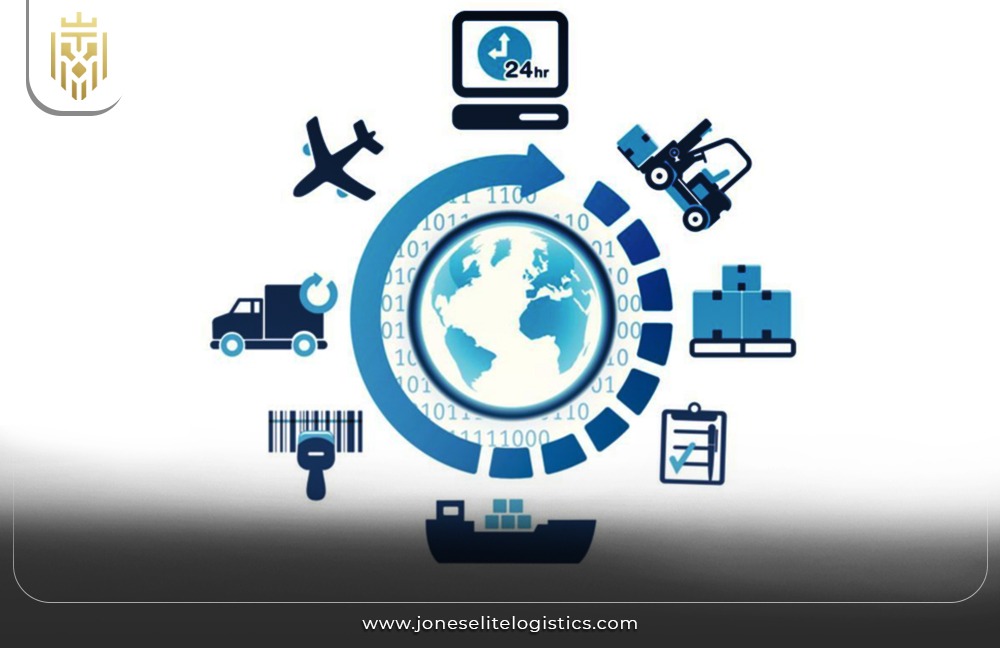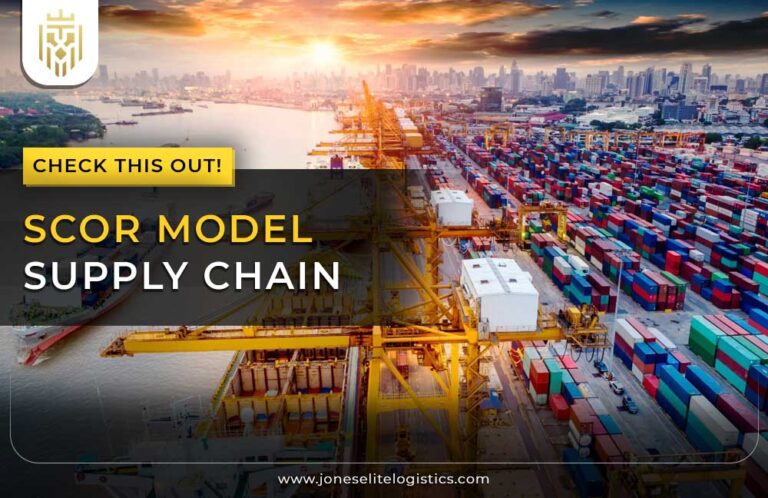What is Supply Chain Disruption?
Supply chain disruption is a disruption that affects the normal tender patterns of material, service, or information flow in the supply chain. This may concern any aspect of the business, from the supply of basic materials for products to the production line and distribution of the end products. Problems associated with disruptions include time wastage, cost implications, and reduction in the production capacity which may further translate to an organization’s inability to meet the market demands.

What can cause Supply Chain Disruption:
Disruptions of the supply chain can come in many forms which include disasters, epidemic disease outbreaks, terrorist attacks, war and strife, strikes and lockouts, delays and breakdown of transports, faulty products, and changes in prices. It means they can disrupt one or more logistic points of the supply chain, often resulting in loss of time, cost overruns, and poor productivity.
Pandemics:
Others may last for some considerable time and cause disruptions in supplies based on labor, factory closures, transport, and logistics disruptions like what was witnessed in the COVID-19 pandemic. A form of illness outbreak may push the quantity demanded high while at the same time affecting the ability of manufacturers to supply these quantities as well as creating bottlenecks and gaps. The problem could be due to difficulties seen by these firms in sourcing raw materials, producing goods, and ensuring these reach consumers without undue delay.

Product Problems:
Defects, quality issues, or even product recalls are disruptions that happen usually with the product category and can pose a great threat to supply chains. Services provided by defective products may be recalled from the market for repair or replacement which causes complications in the production process and will lead to an increase in cost. These problems may affect its image and cost customers’ trust, which in turn brings long-term consequences in terms of both finances and operation. This, combined with quality control and good recall policies, is necessary for managing such disruptions.
Cyberattacks:
Cyber threats pose a serious risk to supply chain functions due to their ability to threaten all key management information systems, communications, and production functionalities. Ransomware attacks, for example, can render access to critical information difficult and thus lead to formidable downtime and monetary losses. Having constructed the argument above, it is clear that companies have to incur the cost of protecting supply chain structures and business flow against cyber threats.

Logistics Delays and Failures:
Logistics risks include transportation risks which can be a result of congestion, agitation problems, customs complications, or the insolvency of the actual carrier. These disruptions may include delays in the transportation of stocks from suppliers to manufacturers or from manufacturers to retailers and or end consumers. Effective communication means of transporting goods, availability of several means of transport, and means of tracking are crucial to minimizing the danger of hold-ups to get the goods to the consumers as early as possible.
Natural Disasters:
Examples of forces majeure include hurricanes, earthquakes, floods, and fires, which cripple Infrastructural frameworks, production prowess, and transport systems. Such occurrences can lead to a stoppage of production, product distribution interruption, and raw materials and finished products stock-out. The alternatives include having to ensure that the firms have business continuity management in disaster-prone countries, seeking to establish backup suppliers, and the need to put up durable structures.
Price Fluctuations:
Supply chain risk is also influenced by the volatility of prices of materials, fuel, and other commodities used in production as this directly impacts the cost of production and therefore the firm’s profitability. Fluctuating prices affect the cost structures of various firms and thus exert a lot of pressure on companies in setting their firm and unit prices. Business organizations require flexibility in sourcing activities and relationship management together with procurement hedging in order to mitigate price risks within and across the supply chain.

Effects Of Supply Chain Disruption:
Various disruptions impact the supply chain hence creating significant economic and operational problems for firms. Consequences are product scarcity, high cost, shutdown of production units and outlets, higher rate of unemployment, and possible impacts on national security.
Shortages:
Lack of raw materials and finished goods is another common effect of supply chain disruptions. This can be rather counterproductive and hinder manufacturing processes and overall product fulfillment of demand throughout the production line. The lead crisis is able to occur in all spheres, beginning with the sphere of healthcare and ending with the sphere of information technologies, and having severe consequences in the form of frequent malfunctions and huge losses in the course of a relatively short period of time.
Inflation:
Loss of transportation and delay in delivery also result in high prices affecting the market, including costs of raw materials and labor inflation. These costs are then recovered from the heads through the hike in the prices of the goods and services that are offered in the market. It lowers the purchasing power, impacts the expenditure pattern of the particular country, and can even hinder economic growth. Therefore, supply chain management plays a key impact in averting costs and controlling the inflationary forces.
Factory/Store Closures:
A serious disruption of the supply chain may pressure factories and stores to shut down either for a short time or permanently. A business cannot get its operations going if there is a lack of essential materials or products retail stores have no stock and sales are affected hence the revenue. Closures affect the surrounding economy, the dynamics of a specific market, and a business’s image.

Unemployment:
Every supply chain disruption causes high unemployment rates because firms release their employees to minimize expenditure when production and sales are affected. This is because organizations cutting their budgets through layoffs, factory closures, and downsizing, among other methods, reduce the number of working individuals, which in turn, increases the rate of unemployment and economic insecurity. Society also loses in the sense that governments and businesses must provide affected workers with retraining programs and unemployment benefits, two expenses that are detrimental to a company’s bottom line.
Threat to National Security:
It is important to note that extreme disruption to the supply chain is already potentially a security threat at a national level especially where it impacts industries like defense, health, or energy. Reliance on foreign vendors in basic goods and services exposes any nation to politically instigated shellings and trade barriers. The issue of supply chain security therefore plays a significant role in the provision of national security and economic stability.
Levels of Supply Chain Severity:
The disruptions that can occur in the supply chain may be in different levels; those with little impact in an organization and those with catastrophic effects. This differentiation aids organizations in creating the right response measures and ameliorating disruption levels for business continuity.
Low:
Successively, low-severity disruptions are less severe and generally refer to minor disruptions, which may in some cases cause slight delays or problems that are easily addressable and do not have a hugely negative effect on the system. These can range from minor disruptions in the form of minor routing problems short-term disruptions in the transport systems or minor or temporary supply disruptions. Such problems, inevitably, are quite common and, in most cases, companies can solve them easily and at a relatively low cost.

Medium:
Severe disruptions cause more serious levels of delays, partial stop of production, or moderate supply scarcities. Such disruptions can occur in many parts of the chain and can cause visible changes in the regular supply of products and costs. To overcome these effects, an organization may be compelled to change its functional strategy, look for other sources of products, or hold additional stocks.

High:
High-severity disruptions are extreme interruptions that significantly affect supply chain management. These can be natural disasters, geopolitical events, epidemics or pandemics, and large-scale cyber attacks among others. Severe disruptions result in long downtime, basic scarcities, massive losses, and future problems in carrying out business processes. This makes it important for organizations to have durable contingencies as well as a diverse supply chain that is suitable for such incidents.

Supply Chain Disruption Examples:
Real-life examples of supply chains help explain the variations in the possible disruptions that can impact global supply chains. Some of the examples include COVID-19, the Suez Canal shutdown, and Japan’s earthquake & Tsunami of 2011. These events affected supply chains in terms of logistics, production, and trading globally showing how integrated today’s supply chains are and the need to build resilience into supply chain management.
Supply Chain Disruption Management Strategies:
Supply chain disruptions may be eased by effective management practices in order to help lessen their effects. Such measures are the development of a risk control plan, adoption of multiple sources of supply, incorporation of technology and computerization, enhancing the transparency of the supply chain, stocking contingence inventory, assessing supplier reliability, incorporation of versatile supply chain management, and involvement of other logistics partners.
Create a Risk Management Plan:
A risk management plan can be defined as a system of recognizing and analyzing the risks and establishing methods for how these risks can be prevented or reduced. It covers things like business continuity plans, risk estimation instruments, and response strategies for getting back on your feet. Such adjustments are important to make sure the plan offered is functional in fighting the threats that crop up from time to time.

Diversify Suppliers:
Generating supply from multifaceted sources is wiser than relying on a single source because it can incite a supply shortage. Both approaches enable a business to source from different suppliers so that if one of the suppliers has a problem, the business is not affected. This strategy helps in building up greater capacity and adaptability in the chain of links.
Use Technology and Automation:
Tapping on technology, there is a better understanding of supply chain dynamics and even the enhancement of its stability. Technologies such as AI, IoT, and blockchain provide features such as tracking, prediction, and automation. They also improve the accuracy of the decision-making process, minimize human intervention, and increase the flow of the supply chain.
Increase Supply Chain Visibility:
Drawing supply chain visibility entails enabling an organization to track each process step in the supply chain in real-time. This improves the visibility and hence it is easier to predict any disruption before it happens. Such solutions as GPS tracking, RFID, and those based on cloud technologies mean an increase in the level of transparency and control.
Invest in Backup Inventory:
Keeping backup stock helps continue operations when some of the stored products are out of stock. Optimum stock in the crucial intermediate and finished goods items can act as a form of insurance against interruption of the supply chain. This approach helps in managing the cost of stocks while ensuring that production and delivery of goods are not compromised to meet the customer’s demand.
Monitor Supplier Performance:
Suppliers can be defined and monitored about reliability and quality to ensure that they are dependable. It deals with the most critical measures that define the efficiency of suppliers and may include delivery time, scrap rate, and responsiveness among others. More to that, close communication with suppliers and evaluation of their performance can help build secure supply chains.
Implement Agile Supply Chain Management:
These include adaptability in that the management of the supply chain using the agile strategy entails the ability to respond to change which is crucial in today’s business environment. As a result, one can highlight the ability to quickly respond to new market opportunities and/or address such issues as fluctuation in customer demand and supply chain disruptions. These include the adoption of cross-functional teams, iteration, continuous improvement approaches, etc.
Collaborate with Stakeholders:
Relationships with other customers such as suppliers, other important business partners, and logistics providers help improve supply chain management. This system lays a lot of emphasis on openness, planning, and sharing of resources in order to prevent and manage interruptions. That is why a separate and strong partnership is based on trust between the parties and creates effective work on solving most of the questions.
Ensure Supply Chain regardless of disruptions with Jones Elite Logistics:
Continuity of supply chain disruptions is possible through the strong solution provided by Jones Elite Logistics. Their services are, for instance, high-risk management, multiple and efficient supply chain networks, as well as digital tracking and management systems. Thus, by collaborating with Jones Elite Logistics, companies obtain a robust and efficient supply chain, experienced consultants, and tools to address critical challenges and minimize disruptions’ impact while realizing consistent performance improvement.
FAQs
1) What is Supply Chain Disruption?
Supply chain disruption can be defined as the disturbance of business functions in the supply chain, which leads to some extent of delay or bottleneck in the delivery of goods and /or services and of course, increase the cost of production.
2) What can cause Supply Chain Disruption?
Business disruptions are disasters that are actual and potential disruptions that affect supply chain operations including natural disasters, pandemic attacks, cyber-attacks, logistics breakdowns, geo-political contests, product problems, and changes in prices.
3) What are the strategies of Supply Chain Disruption Management?
Supply chain management strategies mainly include supply chain risk management plans, supplier diversification, technological advancement and automation, supply chain visibility, backup inventory, supplier performance monitoring, agile supply chain management, and stakeholders’ cooperation.







